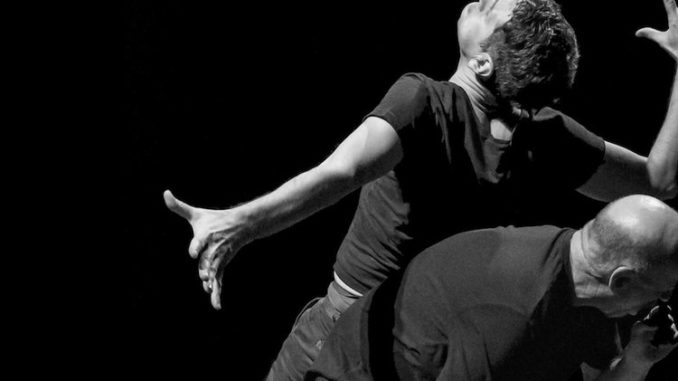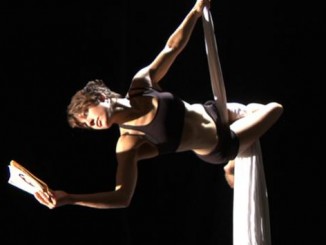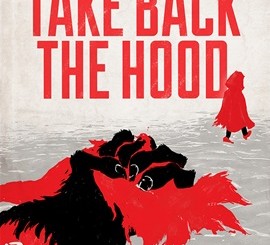
[A Sign of Things to Come]
When the Auckland Museum launched its online cenotaph, it was a chance for many to discover a part of their family history that had otherwise been a difficult task to undertake. The interest in the Centenary made an easy transition to the stage, with the success of plays such as Once on Chunuk Bair, Sister Anzac, The White Feather Project, and Anzac Eve, where New Zealanders demonstrated a genuine interest in seeing the men and women who fought, lived, and died in World War One brought back to life. Set during a break in fighting between Christmas 1916 and Easter 1917, and focused on a friendship between a Serbian soldier and a Deaf Kiwi sapper, Salonica is the latest stage work to deal with the national legacies of the Great War.
Semiotics is integral to representation in theatre, so the use of Sign Language is by no means foreign to the stage (though under-used and under-represented), however, while “attempt[ing] to explore the theatrical possibility of working in three languages” (English, Serbian, and New Zealand Sign Language), Salonica has reversed the structure of tragedy and missed the mark of its predecessors.
The result is that there are two fundamental problems with Salonica. Firstly, it lacks the necessity of conflict. This story, of the friendship developing between two men from different cultures, has no dramatic drive. Their objectives are to return to their respective homelands, but nothing prevents them from achieving this other than the situation in which they currently are. The only obstacle is time. We see them willingly meet, learn to communicate with each other, and share food, drink, and presents. It’s heartening, but it’s theatrically boring.
Secondly, the physical component to the piece is, quite simply, amateurish. It’s the sort of miming students do at drama school to make fun of miming. It’s clumsy, over the top, and insincere. That’s not to say that devisers Shaun Fahey or Mihailo Ladevac are not committed to their performances, or have moments of genuine pathos, but rather that their passion is never a substitute for professional standards.
Providing theatre for the Deaf community is incredibly important when considering inclusion in the arts, and this production should be supported and encouraged to develop.
That these problems have occurred, despite the involvement of both a dramaturg (Writer’s Guild award-winner Bill Hopkinson), and a director (Laura Haughey, who has been working with Deaf performers for years), suggests a development period of more rigorous testing of the theatrical components would be worthwhile in order for it to have a more resonant affect within the wider theatre community.
There is a story there, and while we may be through with the past, the past isn’t through with us.
Salonica was presented by Equal Voices Arts and played at Q Theatre from the 22 to 24 Feb as part of Auckland Fringe.




I saw this production last year at the Arts Centre, Edge Hill University in England, and I don’t recognised this critique’s view. I found it intensely moving and involving. The critique seems to have wanted to see a different play to the one presented, but I welcomed the portrayal of a friendship that didn’t necessarily follow the accepted dramatic structure of ‘tragedy’ . It is not about tragedy, it is about human warm and connection in the midst of a tragedy played out elsewhere. The audience at the performance I attended were largely from the deaf community and as a hearing person, I had the chance to experience something outside my own comfort zone. A marvellous piece of theatre, beautifully executed.
I was shocked to read this review after having seen Salonica in the UK as part of its international tour, where it was one of the best plays I saw in 2017. I would strongly recommend any one to see it, if you have the chance, and judge for yourself as Matt Baker’s review has entirely misrepresented this evocative, touching and powerful piece.
In particular I would question his judgement in relation to the terms ‘amateurish’ and ‘boring’, which might say more about the reviewer’s taste and artistic horizons than the work in question. His patronising comments about the quality of the mime are also quite wrong, the combination of sign language and physical theatre is in fact one of the plays most impressive and groundbreaking features.
My advice is to ignore this review, it’s ill judged language and lack of contemporary theatrical understanding.
I saw this show at Circa in Wellington and it left a huge impression on me. I am hearing and I attended with my friend who is Deaf. It was such a pleasure to go see a show together that required no interpretation and that we could both access at the same level. It was certainly a first for us. The story was told through physical scenes, movement, NZSL and some speech. It was immensely powerful. The actors were incredible and the characters friendship revealed to us on the stage was so moving. The audience were on the edge of their seats throughout. We laughed out loud at times and at others we were moved to tears. I spoke to many of the audience members in the bar after the show and the buzz of excitement was clear, as was the high praise for this show not only for its cultural importance but for the fact that it was outstanding, hugely entertaining and deeply moving.
This review confused me a great deal. I have enjoyed following the positive response to this show in the press and the impact it has made particularly within the Deaf community. I’m really baffled as to how you have reached the conclusions you have.
The whole review reads as if you were at a completely different show.
Not just my opinion but the majority its audience (and also it seems The Dominion Post, The NZ Herald, The Waikato Times and stuff.co.nz to name but a few)
I also feel It needs to be brought to your attention that the low point of this review has to be the following quote:
‘It’s the sort of miming students do at drama school to make fun of miming. It’s clumsy, over the top, and insincere’
Not only is this inaccurate it is deeply offensive in its disregard for and total lack of understanding of Deaf culture and the physical language used everyday by Deaf people.
The physical language of this show was one of it’s outstanding features and should be celebrated. The only thing I can find here that’s ‘amateurish’ is the review itself. It really does discredit the integrity of this blog and gives the reader a misleading impression of what is a wonderful piece of theatre. Charming, moving, relevant, innovative and incredibly important.